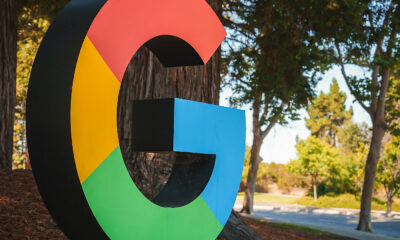MARKETING
AI is going to make us strategy-first content marketers in 2024

It’s the second week of January and although it’s a new year, I’m still the same old me. Back at work, I’ve got new enthusiasm powered by an endless stream of holiday treats that came across my plate in December, but I can already see the bright shiny content strategy I dreamed up in November slipping away.
Sure, I’ll execute on the big stuff; those pillar posts will happen, for sure, and I’ll refresh some key pieces of content so they don’t fully atrophy. But the fun stuff that makes me love content marketing and pushes me professionally? It’s already disappearing in a sea of new priorities, limited bandwidth, and requests. Like I said, same old me.
Here’s the thing: it’s 2024 and I can be the same old me but with a fleet of powerful new sidekicks. I’ve got a better chance of not just bringing my content strategy to life, but even strengthening it as I go through the year—because AI tools are fully coming into their own. And they’re giving content marketers a whole host of gifts including but not limited to:
- Free time: AI tools really have freed me up to think strategically with support in ideating, creating, and editing all types of content. Plus, you can send me whatever nameless, faceless voice recording/blurry images/notes you have, and I don’t have to spend a whole day sorting through them by hand.
- Automation of the time-sink tasks: Tools I’ve tried (and listed below) allow me to try new (and send more polished) content types without the time required to learn a new skill or spend hours on nit-picking editing.
- Augmentation for other core strategic skills: Data analysis with a co-pilot makes it so much easier to stay creative without missing a beat from all the data my strategy generates.
I’m going to give you a look behind the curtain for what I’m planning for my own content strategy development, plus the tools I can use to bring it to life.
AI is a whole new chance to improve our content strategy game
A strategy-first approach to content isn’t a muscle we content marketers often fully flex outside of yearly and quarterly planning sessions. If you do, then good for you, and I am not jealous at all.
I always set out to achieve based on a strategy and I do so every time with the best of intentions, but life and business and huge, urgent requests get in the way. And lately, AI-generated content is also becoming a bit of a distraction in its own way. AI is still young at most organizations, and I’m starting to find content floating across my desk created by well-meaning colleagues. Yet, they’ve created it with no guardrails, processes, or standards. And it definitely wasn’t created with our content team’s strategy in mind.
Without some gatekeeping, this kind of content is risky for both our strategy and our brand reputation.
Plugging a prompt into ChatGPT or any other tool doesn’t translate into great content: despite what some teams seem to believe, more content isn’t better content (even if it was relatively low cost).
But rather than putting the onus on team members to leave the content to us, the pressure is really on us as the content team. It’s up to me to tap the sign and lean even harder into the strategic side of content marketing and sharing that strategy.
Here’s how I’m going to do that and how I will use AI to help:
- Get in on the data action: Your wider org already has AI tools to parse customer and sales data. Plus, the brand, growth, and paid marketing teams have all this kind of data, too. Get yourself a copy of those reports and pull out those themes for content that aligns with what your customers are talking about. Pro tip: Get those into your own preferred/allowed AI tool for a complete summary that works for your content strategy purposes.
- Look for gaps in seconds: Ask AI about the most appropriate keyword opportunities for our ideas. Then, prompt AI tools to get an idea of saturation (i.e., is everyone creating content about this subject?) and summaries to help look for gaps that you can sift through.
- Share, share, share internally: We get lots of requests for new content because teams don’t realize how much content we already have that probably works (or works with a few tweaks) for their purpose. AI tools are great for putting together docs, guides, and libraries to let everyone access the content and content calendar. It’s life-changing busy work now available to complete in seconds. Add in an integration to Slack or Teams to share the docs whenever asked and all of a sudden, you have more time than you know what to do with (not really, but the automation does feel good).
Remember: the value of AI for content marketing is parsing huge amounts of data quickly and accurately, which is half the battle in content strategy.
If the above is my plan, the next question is: how do I stay focused while building out my strategy and chasing new requests? Well, look no further.
4 content marketing trends we’re excited for in 2024 with the help of AI
Content marketers (by content marketers, I mean me) have a lot of feelings about AI tools. There’s grief because I know that there will always be a cohort of (incorrect) people who think that an algorithm can replace me. There’s fear that I’ll be called a “cheater” by using AI. But then there’s opportunity in that AI might make the sticky parts of our jobs easier, and it comes with a big exhale.
I’ve been to a lot of AI webinars hosted by content marketing practitioners & the AI tools themselves, particularly in the last few months of the year. As the year marches on, the sentiment in the group chat is starting to move towards closer to optimism than at any point in the last year.
AI isn’t a replacement; it’s a co-pilot so I can focus on flying the plane (the strategy) and have a second pair of eyes to assess the validity of my ideas and hopefully make them that bit better.
Without further ado, here’s where I’m directing my AI tools’ efforts this year:
1. Master Copy Creation
Machine learning is an incredible tool for copy creation, and we’ve already been using it for years for suggested text, SEO, and more (I love Clearscope and Grammarly). But with the advent of ChatGPT, we’re able to use generative AI to shore up parts of content writing that we all hope to do better: perfecting tone of voice or writing for different channels.
ChatGPT is actually really great for this, which is fantastic news because tone and switching mediums are where so much content falls down because of lack of time, briefing that misses the mark, and because it’s a difficult skill to master. By the time you do, you’re likely no longer in the content creation trenches anymore.
At the same time, ChatGPT isn’t going to nail your specific brand voice with one round of prompts. You can and must edit the content because even as the outputs get smarter, it still sounds like…an algorithm wrote it. But what will it do for you in seconds?
- Transform reports & long-form content into exec summaries
- Create one pagers and short-form content from lots of notes
- Generate copy for slides based on a brief
For this one, all you need is ChatGPT and a good understanding of how to prompt it. If you want to dive deeper, have a look at how content marketing influencers are using ChatGPT.
If you’re an Optimizely user (like we obviously are), you’ll get access to Opal, the AI assistant we built to accelerate the entire marketing lifecycle. We launched our copy generator for Web Experimentation this year, which reduces time and effort in coming up with new ideas and covers all your bases by testing ideas you might not think of (or ideas you’re biassed against).
Read more about copy generators for Web Experimentation.
A word on the elephant in the room:
There’s still some fear that Google is going to penalize the use of AI content. The consensus so far is that you won’t be punished just because you used automatically generated content. So, if you get a blog across your desk that clearly came from a tool, you don’t have to panic.
With that said, quality remains the key guideline Google judges. If your content is valuable and relevant and follows the same principles you use today, then it’s all good.
Where you’ll run into issues is if you pursue quantity over quality with poor, irrelevant, or duplicate content. But the same penalties already apply today.
So, if you’re using tools to improve content that’s tied back to your strategy and you’re not using content to spam Google, then you’re all good.
Gartner predicts that, someday soon, using human-generated content is going to be a differentiator, but it’s still very early to understand what will dominate the next few years. Having both skills is a must for the foreseeable future, and it’s nothing to be afraid of.
2. Create a video production house
We’re inspiring, educating, and selling with video—and we’re now doing it all in under 30 seconds.
ICYMI, 2023 was the year big brands started throwing resources at ultra-short form video content, and the early results suggest that we’ll see a lot more of it in 2024.
The rise of YouTube shorts and its early adopters like Nike have shown impressive results, and that’s great news for content marketers. It hasn’t just scored improved conversions and engagement, but according to Think with Google, it costs less! Truly a way to do more with less that isn’t painful.
Some compelling stats:
Does growing interest in video make you feel like you’re in a hostage situation? Do you say “yes I do video” in the least convincing voice possible, knowing you’ll owe your design friends a favor? Or is it just me?
Spending more time on video is way less daunting than it used to be, particularly if you’ve got a strong game plan to work from.
Among a few of the web tools that will finally allow you to confidently create videos to your heart’s content (regardless of your level of video production experience):
- Descript lets you edit videos by editing the script, perfect for those who love words but not timestamps (plus, it works for podcasts, too!)
- Fliki takes the sting out of video creation with AI voices that never say “um” in 75+ languages
- Visla turns a script into a new video so you never need to learn how to edit a video
- Opus Clip takes your feature length film (if you’re like us) and creates a marketing sizzle reel (purpose for repurposing keynotes, full demos, and more)
3. Data and analytics
Every strategy comes with success metrics, and we can debate all day about the most effective content marketing KPIs, but one thing will remain true in 2024: we’ll need to share that data.
But data and analytics are getting so much easier than they used to be. With tools like Whatagraph and Supermetrics, you can pull together your content data in minutes from places like Ahrefs, GA4, Hubspot, and anywhere else your content data lives.
For me though, the joy of these tools isn’t just in the time saving and the superior visualization. I can also ask ChatGPT to help me interpret it (only available as the Marketing Data Analyst GPT via ChatGPT Plus at present). ChatGPT is perfect for simplifying enormous datasets generated by our big marketing websites and funnels. It doesn’t replace all my context, but it gets me started much faster and can sometimes pick up things I miss.
If I’d had this tool when I first started, I would have spent far less time wondering and more time doing (and probably negotiated more raises).
Here are a few resources to get you started:
The tool:
The tricks:
P.S. Don’t forget about the individual data tools now available for different mediums. In fact, before you do anything, go have a browse of all the AI tools currently available if your mar-tech stack and in its periphery. Some of them will be ChatGPT rolled up into your existing product, but you’ll also discover tools like Podder, which helps you build out in-depth podcast demographics so you can create content that they want.
4. Reinvigorate your podcasting dreams
The state of podcasting is, some say, very much up in the air.
Podcast listenership is only going to keep growing in 2024, particularly in Latin America where double-digit growth is still happening. Plus, the big networks remain positive about the medium, despite some pretty significant failures that ultimately led to layoffs at Spotify, Wondery, and iHeart Media in 2023
And those same executives at the big media groups think 2024 is going to be the biggest year yet, in part thanks to AI. And that’s probably the one thing that we (me) and those executives have in common.
The year 2024 can be the year you finally take the leap into podcasting—or revive the dormant podcast you had back in 2020. Why?
AI can help you do the heavy lifting with your podcast so you can focus on making it the best it can be in your category. You’ll get tools for creating scripts, editing and processing, and even distribution. Even better, you can follow the lead of the industry and use your podcast to reach global audiences (customers) with the help of these tools.
But for longevity, quality, and a bit more fun: where does a podcast fit into your content strategy in 2024? Where does it fit into the wider marketing strategy and more importantly the budget? These questions are more important than deciding the topic for your comeback episode. Because without distribution and buy-in from your teams, you still run the risk of shouting into the void.
Once you know, these AI podcasting tools will change everything for you:
- Wisecut will cut and edit videos that are social media ready directly from your podcast
- ChatGPT or Jasper can put together a basic script for you to edit
- Podcastle will create better quality recordings and simplify your editing
- Clean Voice cleans up your content by eliminating filler words, silences, and stuttering
Here’s to 2024
Call me a dreamer, but I see great things for content marketing in 2024. Getting by with a little help from new AI tools to augment the busy-ness that gets in the way of perfecting our strategy and taking more creative risks is the different between January 1, 2024 and this time last year.
I’ll be back midway through the year to let you know how I’m getting on, but all going well, you’ll see the product of my eternal optimism across Optimizely’s marketing. More experimentation, more data, and more chances to really lean into this year’s trends.
MARKETING
Updates to data build service for better developer experiences

Optimizely Feature Experimentation users can now benefit from an average of 87% faster data file updates. The ability to generate data files in a faster and more predictable manner enables our customers to make updates to feature flags and experiments more quickly and reliably.
- Datafile build service – Performance, stability
- Webhooks by environment – Lower latency across all environments. Push notification that a new datafile is ready
- Secure environments – Security
Key features
- Smoother workflow
It lets you update feature flags and experiments faster and more consistently as a seamless workflow step. - Better developer experience
Developers can expect faster and more predictable feedback when configuring feature flags during local development. - Faster execution
Product teams benefit from “kill switches” to roll back problematic features and flawed experiments to protect user experience and conversion rates.
Finally…
Speed, performance, and usability are key to delivering a better experience, and as such we are always striving to improve the performance of back-end services. Our improved datafile build service enables you to deliver feature flags and experiment changes to your end-users more quickly and reliably.
Optimizely Feature Experimentation generates a JSON datafile that represents the state of an environment in a customer’s Feature Experimentation project, this datafile is polled for and consumed by our SDKs to enable user-level decisions and tracking.
With our new datafile build service, Feature Experimentation customers will experience better performance and reliability when delivering feature flags and experiment changes to end-users.
MARKETING
The Ultimate Guide to Email Marketing

Email is more than just an informative message; it is a sales tool that helps the brand reach its potential customers. That’s why email marketing continues to find a place in many brands’ marketing strategies. Also considered the most effective medium to reach a potential audience, email marketing is estimated to proliferate to more than 370 billion emails per year by 2025.
Statista’s recent report revealed that there would be a rapid and consistent increase in the use of email marketing as a promotion tool. Another report published on Financesonline.com projects that there will be 4.5 billion email users by 2024 compared to 4 billion in 2020. The rapid increase in the use of email has forced businesses to incorporate them into their marketing strategies.
Therefore, companies that want to attract customers to their brand organically must be aware of the core fundamentals of email marketing. Therefore, in the succeeding part of the article, we will understand in-depth email marketing. Everything will be discussed in the following paragraphs, from its meaning to tools.
The Ultimate Guide To Email Marketing
Experts believe that customers love to hear from the brand they love; that’s why they choose to subscribe to the monthly and weekly newsletters that companies send to make them aware of new products, among other things. So, to understand how to formulate an effective email marketing message, it is important to understand what email marketing is.
What Is Email Marketing?
Often digital marketing definition includes email marketing in it. So, what is email marketing? It is a process that revitalizes email as a promotion and advertising tool. Through email marketing, potential customers learn about new products, services, discounts, and offers, among other things. Therefore, it is an effective marketing medium that bridges the gap between the brand and the customer. It also allows brands to communicate with customers directly.
Due to its umpteen benefits and easy-to-use interface, email marketing has become one of the most popular marketing strategies globally. Large, medium or small businesses can implement email marketing into their brand promotional strategy because of the reasons listed below.
Why Is Email Marketing Important?
- It is a cost-effective marketing strategy compared to outdoor, news, and television advertisements.
- It has a higher return on investment (ROI) and helps brands reach a wider audience.
- It is an effective medium to reach new customers with minimal resources.
- It easily integrates into different marketing channels.
- It offers personalization by assisting in creating targeted messages for specific customers.
Email marketing is a powerful promotional tool that helps brands successfully persuade their customers. Its unique features and characteristics force customers to take action on them by reading, deleting, or archiving them. Therefore, it is too hard to avoid email. To effectively formulate an email marketing strategy, a marketing manager should follow a few steps that we will be discussing in the next part of the article.
How To Formulate An Email Marketing Plan?
Follow these steps to formulate an effective email marketing plan successfully:
- Understand your audience’s needs
- Include a call-to-action
- Decide the content of the email
Formulating an email marketing plan is an elaborative process requiring the marketing manager to perform various steps to understand the target audience. Once you have understood your audience’s needs, it is easy to formulate the content of the email. Unfortunately, brands often concentrate on writing email content that aligns with the needs of their audience. It is effective but compromises the organization’s goal. So, while formulating an email marketing plan, try to integrate business goals and audience needs into the strategy to get more effective results.
Different types of email marketing incite different results. So, depending on the market, audience, and business size, a company can decide the email marketing type. Below are some of the popular types of email marketing prevalent in the current times.
What Are The Types Of Email Marketing?
• Newsletters
Newsletters are a significant way of informing the audience about new products or services launched by a brand. In addition, it is used to help the users understand the brand better. Therefore, they follow a strict delivery schedule, which cannot be shifted or changed frequently.
• Welcome emails
Welcome emails are sent to new customers or potential users whom the brands wish to turn into consumers. This type of email marketing aims to educate audiences about the brand, its products, services, and brand goal, among other things.
• Promotional emails
Promotional emails’ main focus is to persuade customers to buy a product or service. Therefore, they are designed to influence the audience to buy the product.
• Sponsorship emails
Brands can use different types of email marketing to reach the audience. Sponsorship email is summarized as the process of promoting a product and service on another brand’s email ad space. In addition, it is used to attract new customers to the products.
Email marketing is a marketing activity that can be intimidating and strenuous for marketing managers. Therefore, brands use many online tools to automate and classify email marketing processes. In the last part of the article, we will discuss the tools of email marketing that helps brands promote their product or service effectively.
What Are The Tools Used For Email Marketing?
Here are some marketing tools that brands commonly use.
- Mailchimp
- Campaign Monitor
- Sendinblue
- Easysendy
- SendPulse
Besides email marketing, there are different types of digital marketing strategy that helps in reaching the targeted audience effectively. To understand the intricate details of different digital marketing strategies, marketing managers can take digital marketing certification courses offered by Emeritus India in association with renowned Indian and international universities.
MARKETING
How To Protect Your People and Brand
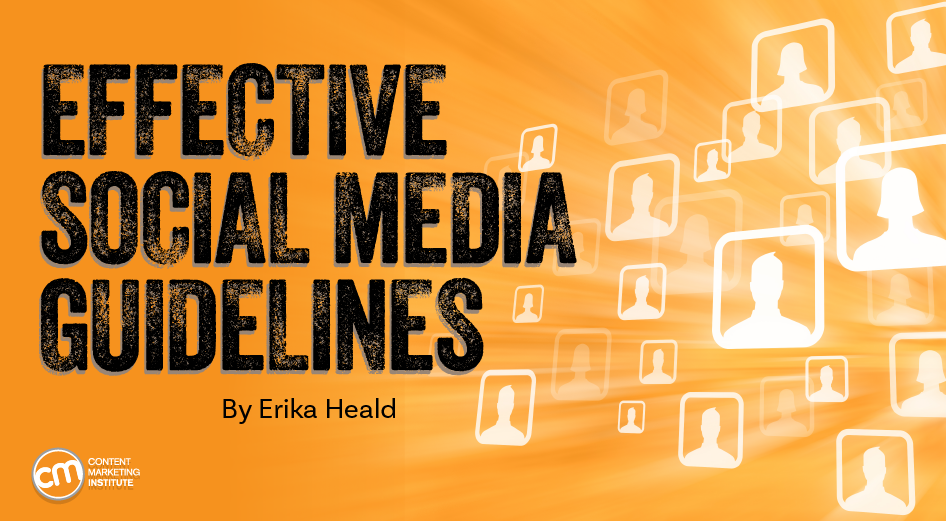
Your lack of social media guidelines could discourage employees from becoming brand advocates and even applicants from joining your company. I speak from personal experience.
When I first joined LinkedIn, my profile said I worked for a “Bay area Fortune 500 financial services company” instead of noting its name and linking to the company page. Soon, many of my colleagues’ profiles said the same thing.
You see, our organization was trying to figure out its social media policies within the confines of a highly regulated industry. It blocked access to any website with a social component — including YouTube. When employees were asked about using social media on their own time and devices, the company’s initial guidance was they didn’t want them using social media at all.
Well, that wasn’t going to happen. Instead, thanks to lengthy conversations with my legal and compliance colleagues, I hit upon a solution: I scrubbed any mention of my employer in all my public profiles.
Why employee social advocacy matters
Why do employee brand advocates matter? Because people are increasingly wary and distrustful of brand and government claims and prefer input from their peers.
The Edelman Trust Barometer underscored this message. In its 2024 iteration, it found people were concerned that the media (64%) and business leaders (61%) are purposely trying to mislead people by saying things they know are false or gross exaggerations.
This shift in trust becomes a competitive advantage for brands that cultivate thousands of eager brand ambassadors, but this requires documented employee social media guidelines to not only allow your team members to thrive on social but to protect your brand from legal risks.
Take a responsible approach to workplace social media policies
Whether you like it or not, employees will talk about your company on social media, and it’s their federally protected right to do so.
Many businesses react with fear and develop extensive restrictions around what employees can or cannot say online in their company social media guidelines. They require employees to agree to a list of don’ts and end the conversation.
However, innovative companies increasingly prioritize employee advocacy, seeing both employee retention and bottom-line advantages. A recent case study showed tech leader Salesforce activated about a third of its 73,000-person employee base as brand advocates, resulting in a 2,000% ROI on its social ambassador program.
Social media guidelines for employees serve as guardrails for online activity and show employees you want them to be engaged online, helping to build on your company’s social media success.
Follow the essentials for your guidelines
The length of your company’s social media guidelines is less important than their accessibility and quality. Ensure any employee can understand the guidelines. Create one-pagers or cheat sheets for specific activities, like training or unique campaigns.
At a minimum, all employee social media guidelines should include the following elements:
- Brand’s purpose on social media — Document the brand’s purpose for each social platform. Whether for recruitment, content amplification, customer advocacy, etc., the guidelines should explain why the company exists on each channel and how employees can support that purpose.
- Company style guide — List any trademark needs and spelling of company products and services so that employees correctly present the brand. You should also define your brand personality and any language considerations.
- Access to shared brand asset folder — Create a central folder employees can access for company logos, how-to’s, shared FAQs, branded profile headers for social sites, and more. Consider creating a list of preferred hashtags and their purposes, especially with company hashtags such as Dell’s #IWorkForDell or IBM’s #ProudIBMer. Keeping this information in one place increases the likelihood that employees will stay on brand.
For a deeper look at these areas, including resources to help you define your social media goals, check out my article, Why Social Media Guidelines are the Key to Unlocking Employee Brand Advocacy.
Use guidelines as a brand defense
The stakes can be high for enterprises when employees use their social media channels in unapproved ways, and savvy companies know the importance of developing extensive social media guidelines.
Get ahead of potential issues and address these all-too-common social media pitfalls in your employee social media guidelines:
- Legal concerns — Make it incredibly clear at the start of all projects what is and is not approved for social sharing. Also, while many people differ on the use of “views-are-my-own” disclaimers, large enterprises should discuss whether they want employees to have such a clause on their accounts.
- Unsanctioned brand accounts — When your company spans your country or the globe, employees may create localized accounts. Address this by listing all official corporate accounts in your social guidelines and asking team members to use only those for brand-related matters.
Consider having a social media request form that allows employees to suggest new accounts or content. This way, their enthusiasm can be better harnessed with a conversation versus an email request to delete the rogue account.
- Departed employees — As employees move on to different career opportunities, they may forget to update their profiles to note they are no longer with your company. This could cause confusion when they start posting content about their new companies or when customers search LinkedIn for staff. While you cannot force individuals to change their social account information, you can at least make the request a part of the exit or off-boarding process.
Enterprise social media guidelines examples
Many brands make their company’s social media guidelines public. These examples can serve as great models for your company’s guidelines. Keep in mind, though, that these are just public-facing documents. The organizations may have more expansive guides for internal audiences.
Each of these three examples has unique elements, but they boil down to address the same point — not everyone knows how to act online.
- Stanford University: These extensive guidelines have a small yet informative section on an individual employee’s social media use. The main points cover how employees are responsible for what they say on social and how they should think about how their social engagement may affect the organization’s reputation. While this may seem general, the policy also links to the university’s information security and privacy policies. What truly sets this social policy apart is its thoroughness in discussing using social on behalf of the organization.
- IBM: What stands out in this guide (no longer available on IBM’s public site) is that employees are clearly encouraged to engage in industry conversations online and have their own blogs. “Bring your own personality to the forefront” is part of the company’s guidelines, with the necessary caveat to not use offensive or harmful language.
- Dell: This policy is distilled into five easy-to-digest bullet points for employees and directs them to the Dell social media team email for additional questions. It tackles the issue of rogue accounts, noting that an account created for Dell may be considered Dell property and that accounts cannot be created to ride on the success of Dell’s corporate accounts.
Educate employees on the social media guidelines
As part of every employee’s onboarding, a member of the social team should discuss the company’s social media policies and guidelines and help any new hires set up their channels in a brand-relevant way.
To maintain and grow awareness of the company’s social media policies, get creative:
- Host lunch-and-learn conversations. These informational meetings allow employees to enjoy their food while you discuss topics relevant to your company’s social media channels. If your company has multiple offices, hold a video meeting. Record the conversation to provide a playback file for those who cannot attend.
- Post social media office hours. If employees are hesitant to ask questions during meetings or regular day-to-day operations, give them a safe place for in-depth, one-on-one time by hosting regular social media office hours. This strategy establishes your social team as a helpful resource rather than the brand police.
- Send social media amplification emails. Email employees regularly to share content you want them to amplify. Include suggested text for easy plug-and-play for busy employees. You cannot rely solely on email, though, as internal emails have an average open rate of 76%.
- Create a social media Slack or Teams channel. If Slack or Microsoft Teams is where work happens in your organization, share all your social content there as well.
- Hold employee meetings. Create regular update/reminder slides employees can include in presentation decks during company all-hands, all-team meetings, or individual group or office meetings.
- Use the company intranet. An intranet can be a great resource for increasing productivity and distributing information to employees. Share updates to the social media policies and use it as a hub for all your social resources.
- Develop training videos. With more internal resources available, enterprises can explore using video to educate employees on topics related to social. Research has found that viewers retain 95% of a message when they watch it in a video compared to just text, so the time commitment to create a video could pay off in message retention.
Continue success with employee social media guidelines
In addition to the core company social media guidelines, ensure that employees can access the brand voice so they can mirror your brand’s language and engage with content that you think best emulates what you want to see your employees doing on social media platforms.
Ongoing monitoring and education are the keys to getting the most out of your guidelines. But with an eager brand advocate base on your side, you’re more likely to see the social ROI you need to achieve your goals.
Updated from a January 2020 article.
HANDPICKED RELATED CONTENT:
Cover image by Joseph Kalinowski/Content Marketing Institute
-
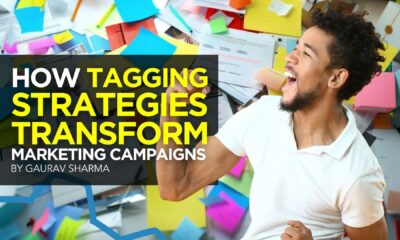
 MARKETING6 days ago
MARKETING6 days agoHow Tagging Strategies Transform Marketing Campaigns
-
SEARCHENGINES6 days ago
Daily Search Forum Recap: May 3, 2024
-
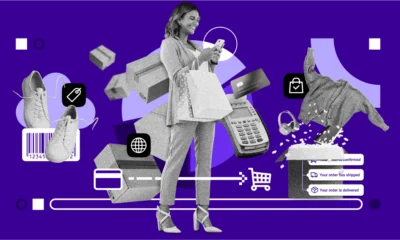
 MARKETING7 days ago
MARKETING7 days agoTinuiti Recognized in Forrester Report for Media Management Excellence
-

 WORDPRESS7 days ago
WORDPRESS7 days agoThe Top 5 AI-Powered Tools for WordPress Creatives – WordPress.com News
-
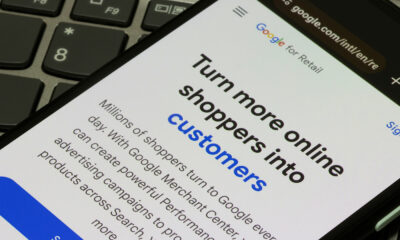
 SEO6 days ago
SEO6 days agoGoogle Performance Max For Marketplaces: Advertise Without A Website
-

 PPC7 days ago
PPC7 days agoStandard Performance Max vs Performance Max for Retail
-

 SEARCHENGINES5 days ago
SEARCHENGINES5 days agoThe Industry Mourns The Loss Of Mark Irvine
-

 MARKETING4 days ago
MARKETING4 days agoA Recap of Everything Marketers & Advertisers Need to Know








